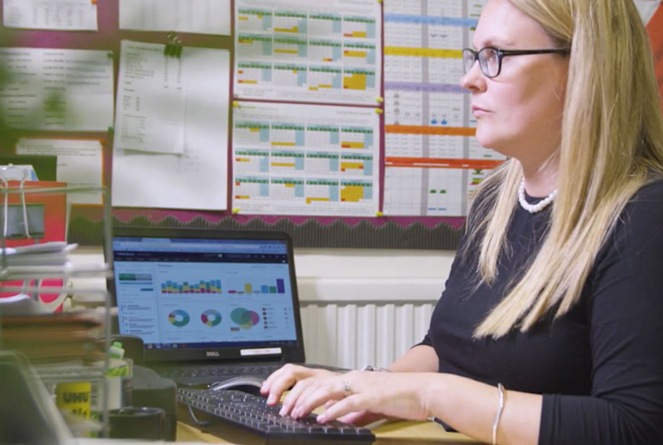Introduction
‘The answer to this is obvious’, you think. It can be if you have a stable cohort that starts Year 12 with you and continues through to Year 13, completes their exams after two years, and then leaves for their next adventure. If, however, you have students leave midway through, join midway through, or repeat a year, the picture becomes slightly less clear.
This blog, written by data expert Sam Huxley, explains the rules and complexities of KS5 cohort eligibility for the Department for Education (DfE) performance tables. It helps schools understand which students count and how their results are attributed.
Which students count?
Students are eligible to be counted if they are aged 16, 17 or 18 at the start of the academic year and are classified as at the end of 16-18 studies. To be at the end of 16-18 study, they must meet at least one of the following criteria:
- Entered at least two qualifications, each equivalent to at least one A Level
- Entered at least one qualification, equivalent to at least two A Levels
- Entered both a T Level core and T Level occupational specialism
- They are 18 at the start of the academic year and have not previously been included at their current school or college
Schools and colleges can request deferral of students who meet criteria 1, 2 or 3 if they are continuing their 16-18 studies, perhaps if they are retaking a year. However, if the student is 18 at the start of the academic year, schools will be unable to defer.
Now that we know which students are eligible to count, we need to think about which school or college their results will be attributed to. For schools that return the Spring (January) census and colleges that return the ILR (Individualised Learner Record), results will be attributed based on these. For Independent schools, results will be attributed based on the awarding organisations’ data.
Students moving between schools and colleges
If a student leaves one school or college to attend another and continues their 16-18 study period, some of their results may be attributed to the first school or college. If the student completes AS Levels in Year 12 at one school, then moves to another school BEFORE the Year 13 January census and completes A Levels in Year 13, the AS Levels will count for the first school while the A Levels will count for the second school.
However, the AS Levels will only count once the student has finished 16-18 study; as an example, if a student completes AS Levels with you in Year 12 in 2023/24, then moves to another school and completes Year 13 in 2024/25, their AS Levels will be included in your school’s 2024/25 performance tables. If the student takes AS Levels with you in 2023/24, then moves school but decides to repeat a year, thus completing 16-18 study in 2025/26, their AS results will be included for your school in that year.
If the student completes AS Levels in Year 12 at one school, then moves to another school AFTER the Year 13 January census and completes A Levels in Year 13, all qualifications will be attributed to the first school. If they complete AS Levels in Year 12, then move to another school after Year 13 January census but do not complete 16-18 study that year, their AS Levels will count toward the first school, and any qualifications completed in Year 14 will count toward the second school.
If a student completes qualifications with you in Year 12 but then leaves and does not return to education, their results will usually be included in your school performance measures when they reach 18, though you can request that these results be included earlier if you wish.
If a student completes Year 12 with you without taking any qualifications and then moves to a different school or college before the Year 13 January census, there will be no impact on your performance figures as nothing will be attributed to your school.
Students attending multiple institutions
If a student attends more than one school or college simultaneously, all results, regardless of where the exams are taken, will be attributed to the school recorded as ‘main’ in the census or the school or college with the highest volume (based on A Level size equivalence) of exams, or the college with the earliest start date or latest finish date.
Impact on school figures
The DfE reports on specific cohorts separately, rather than full 16-18 cohorts: the A Level, academic, applied general, and tech level cohorts. From 2023/24, they will also report on T Level cohorts. For students to be included in these cohorts, they must take at least one qualification of that type (i.e. to be included in the A Level cohort, they must take one A Level or one AS Level); if they complete 16-18 study based on the student eligibility criteria without achieving any qualifications, they will not be included in any of these cohorts.
Master DfE Performance Tables with Juniper
Navigating the DfE's performance tables can be challenging, especially with so many other responsibilities.
But don't worry—Juniper's team of education data specialists is here to help.
For more information on cohort eligibility, visit the DfE's technical guidance.
Reach out to our team for expert advice or download our free decision web to assist students leaving your school during the 16-18 study period.
You can also check out our related blog for KS4.
KS4 cohort eligibility: Who counts in the DfE performance tables?
Together, we can ensure your school's data journey is a successful one.


/Primary%20school%20.jpg?width=2000&name=Primary%20school%20.jpg)








.png?width=940&height=788&name=Lingfield%20College%20Case%20Study%20(5).png)
-1.png?width=1000&height=833&name=National%20Association%20of%20Head%20Teachers%20(3)-1.png)
-3.png?width=1080&height=1080&name=Untitled%20design%20(10)-3.png)






